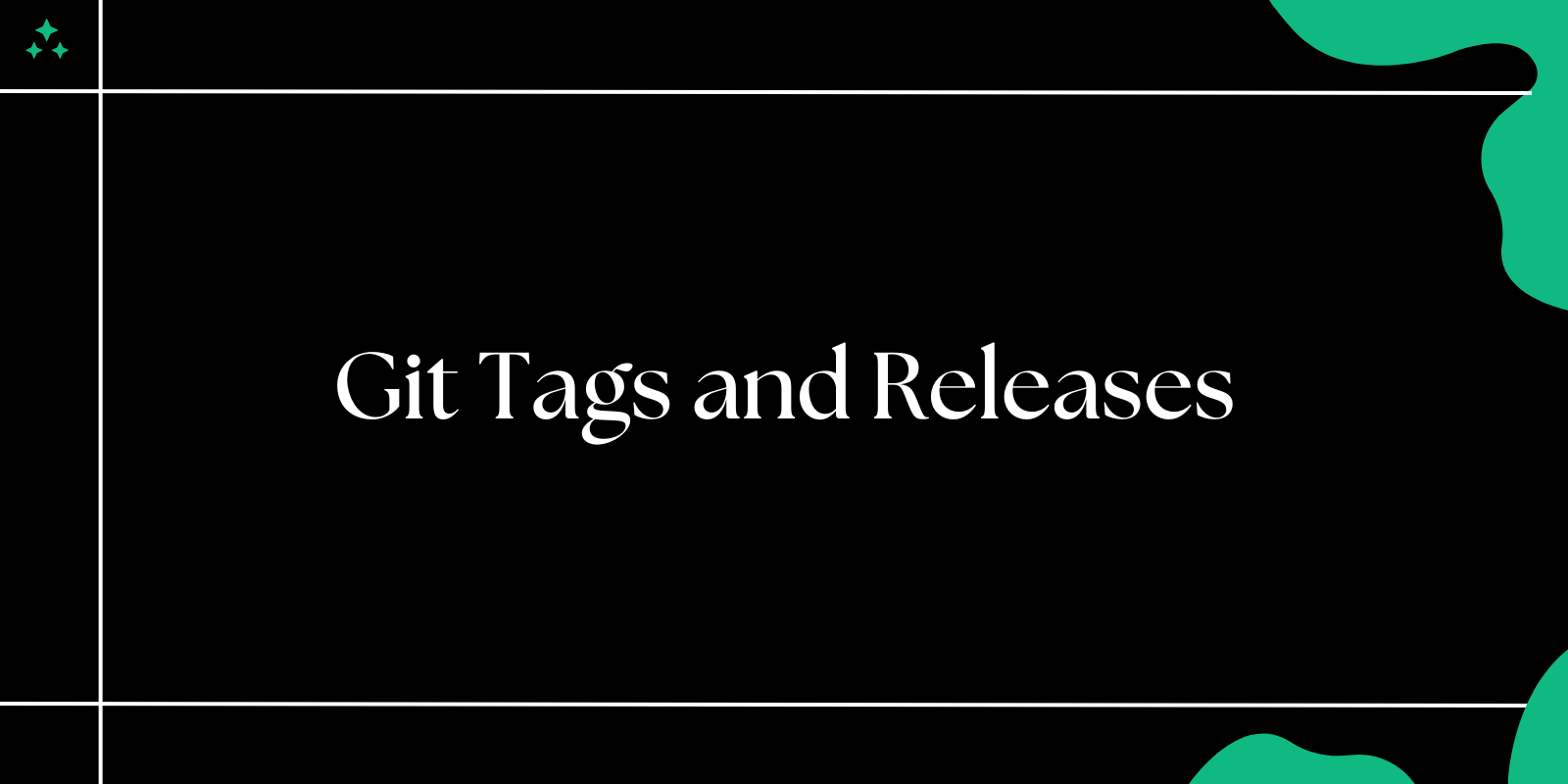Introduction
In modern software development, tracking versions and releases is crucial to maintaining order, ensuring stability, and providing users with consistent updates. One of the key tools for managing versioning in Git is Git tags. Tags allow you to mark specific points in your repository’s history, typically used to mark release points like v1.0.0 or v2.1.3. Git tags and releases make version management easier, more transparent, and an essential part of your workflow.
In this blog, we'll explore Git tags, their types, how to create and manage them, and how releases work to provide a clear versioning strategy for your software projects.
What Are Git Tags?
Git tags are references to specific commits in your repository. They are commonly used to mark points in history that are important, such as release versions. Unlike branches, which move as new commits are added, tags remain fixed to a specific commit.
There are two primary types of Git tags:
- Lightweight Tags: These are simple pointers to a commit. They don't contain any extra information besides the commit hash.
- Annotated Tags: These are full objects in the Git database. They contain metadata such as the tagger’s name, email, date, and a message. Annotated tags are recommended for marking release versions as they provide additional information.
When to Use Git Tags
- Release Versioning: Marking a version of your software like
v1.0.0orv2.1.3. - Milestones: Creating a tag for major project milestones.
- Stable Versions: Tagging commits that represent a stable build of your application.
How to Create Git Tags
Creating Git tags is straightforward. Here are the basic commands you need to know.
1. Create a Lightweight Tag
A lightweight tag is essentially a bookmark for a specific commit. It’s quick to create, but it doesn’t contain any extra information.
git tag v1.0.0
This creates a tag named v1.0.0 pointing to the current commit.
2. Create an Annotated Tag
Annotated tags contain more metadata. You can add a message to describe the release or milestone.
git tag -a v1.0.0 -m "First stable release"
This creates an annotated tag v1.0.0 with a message "First stable release".
3. Tag a Specific Commit
You can also tag a commit that isn't the most recent one. This can be useful if you need to mark a version that was created earlier.
git tag v1.0.0 <commit-hash>
Replace <commit-hash> with the hash of the commit you want to tag.
Pushing Git Tags to Remote Repositories
By default, Git tags are not automatically pushed to remote repositories when you push your commits. You need to explicitly push tags.
1. Push a Single Tag
To push a specific tag to the remote repository, use the following command:
git push origin v1.0.0
2. Push All Tags
If you have multiple tags and want to push them all at once, you can use:
git push --tags
Working with Git Releases
Releases in GitHub or GitLab are essentially a way to package and distribute a version of your software. When you create a release on these platforms, you associate it with a Git tag, making it easy for developers to download and use a specific version of your code.
How to Create a GitHub Release
After creating a Git tag, you can go to your repository on GitHub and follow these steps:
- Click on the Releases tab.
- Click Draft a new release.
- Choose the tag you created from the Tag version dropdown.
- Write a title and description for the release.
- Attach any release assets (such as compiled binaries or documentation).
- Click Publish release.
This will create a formal release on GitHub that can be downloaded by others.
Benefits of Git Releases
- Distribution: Releases allow users to download specific versions of your project easily.
- Clear Versioning: By associating releases with tags, it’s easy to track which commit corresponds to which version of your software.
- Change Logs: You can provide detailed notes on changes between versions, helping users understand what’s new or fixed.
Best Practices for Git Tags and Releases
1. Use Semantic Versioning
Semantic versioning (SemVer) is a popular versioning system that communicates changes in your software clearly. It uses the format MAJOR.MINOR.PATCH, where:
- MAJOR: Incremented for breaking changes.
- MINOR: Incremented for backward-compatible feature additions.
- PATCH: Incremented for backward-compatible bug fixes.
For example:
v1.0.0: Initial release.v1.1.0: New feature added.v1.1.1: Bug fix.
Using this system makes it easier for developers and users to understand the changes between versions.
2. Create Tags for Every Release
Every time you push out a new version, create a tag to mark that version. This helps you maintain a clear history of your releases and ensures that users and collaborators can access the right version of your software.
3. Provide Clear Release Notes
Whenever you publish a release, include detailed release notes that explain what changes were made. This could include new features, bug fixes, and known issues. This helps users quickly understand the impact of upgrading to a new version.
4. Don't Modify Tags
Once a tag is created, avoid changing it. If you need to change the version associated with a tag, create a new tag with a different name (e.g., v1.0.1 instead of modifying v1.0.0).
Conclusion
Git tags and releases are powerful tools for managing software versioning. By using Git tags to mark important points in your repository’s history and pairing them with releases on platforms like GitHub or GitLab, you can simplify the versioning process and provide a seamless experience for your team and users.
By following best practices such as semantic versioning, creating tags for every release, and providing clear release notes, you can ensure that your software is properly versioned and easy to maintain as it evolves. Mastering Git tags and releases will make version management much simpler and more efficient in the long run.



